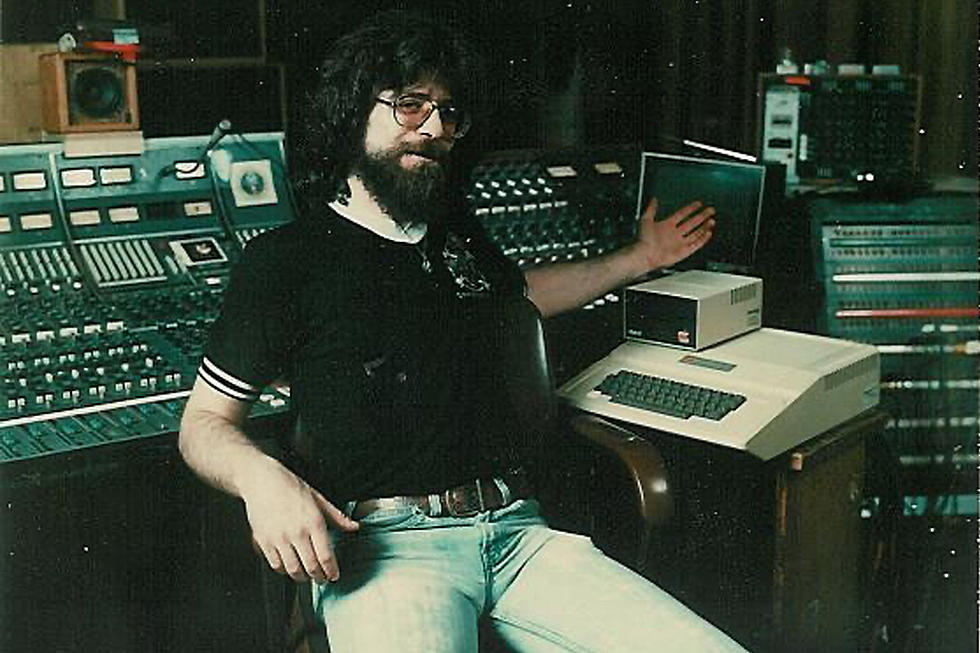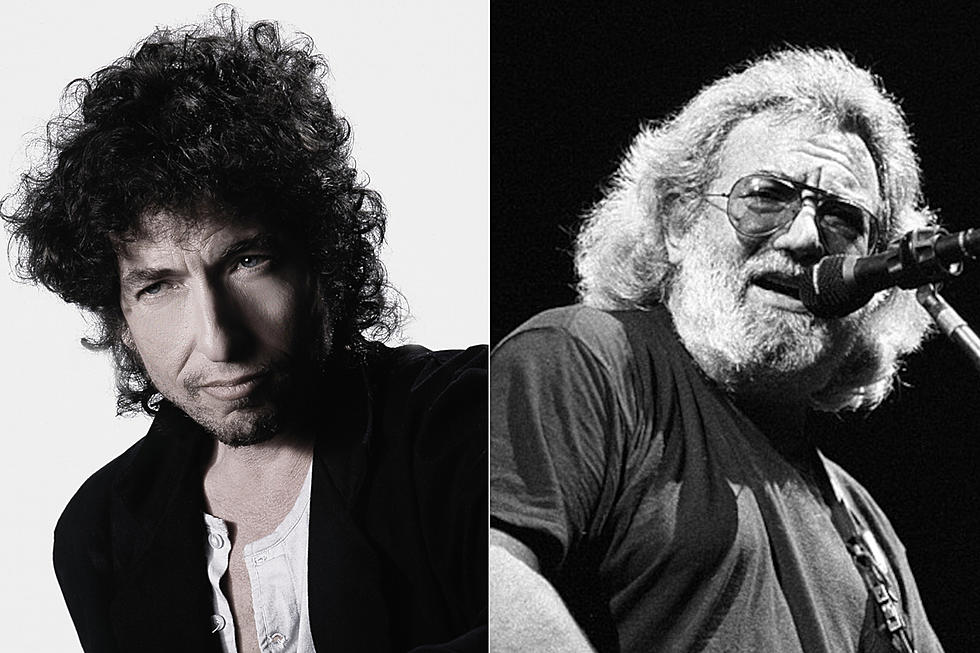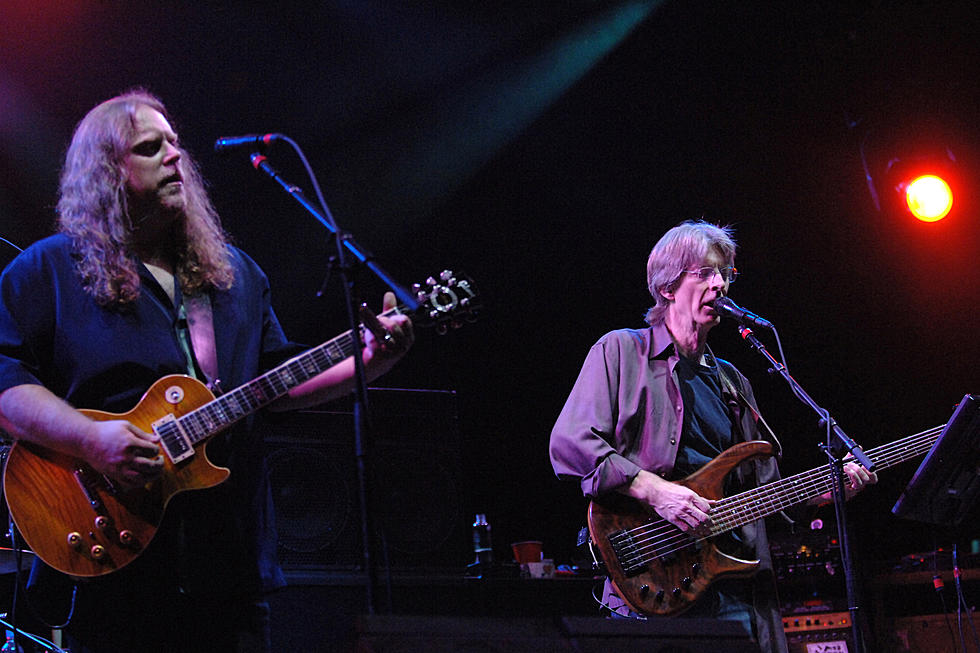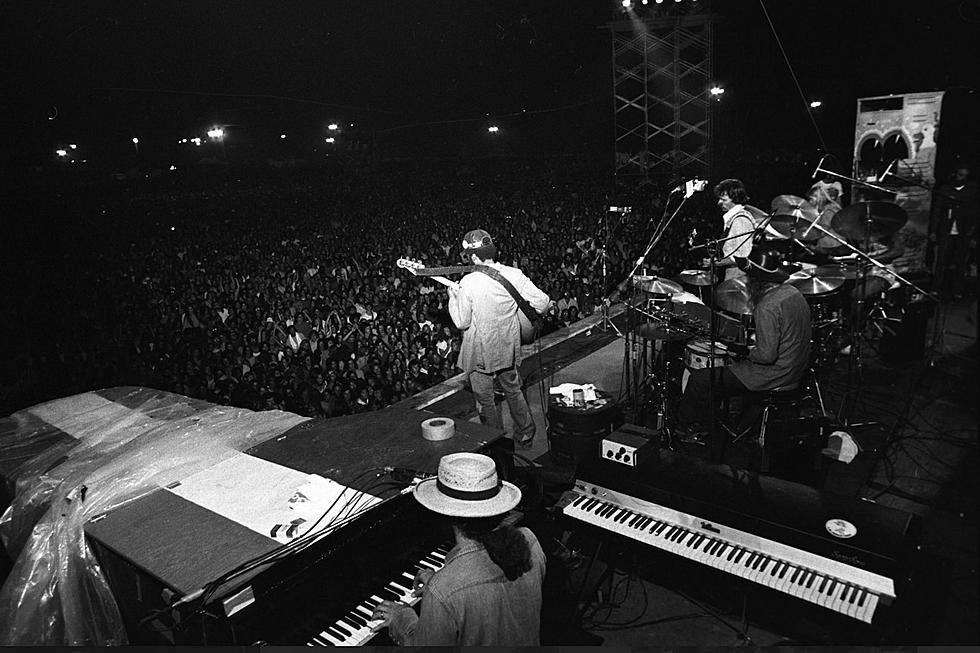
Top 10 Grateful Dead Shows
It's no easy task, trying to pick just 10 great Grateful Dead shows from the band's decades of active touring. However, for the aspiring Deadhead, or the curious traveler, these shows, listed chronologically, are the stone tablets that await you atop the psychedelic mountain.
Feb. 14, 1968
Carousel Ballroom, San Francisco"We respectfully dedicate this set to the memory of Neal Cassady..."
A classic example of "Primal Dead", this energetic Grateful Dead show features the band working out with new material that would figure heavily in the years to come. The embryonic "Dark Star" and "China Cat Sunflower" are speedy and brief. The second set, which Jerry Garcia dedicates to the memory of the recently departed Neal Cassady, is a scorching dress rehearsal for the soon-to-be-released Anthem of the Sun album, including a complete reading of the "That's It for the Other One" suite, "New Potato Caboose" and Bob Weir's supersonic "Born Cross Eyed." The whole thing wraps up with Ron "Pigpen" McKernan taking the lead on a slick and spunky version of "In the Midnight Hour."
April 5, 1969
Avalon Ballroom, San FranciscoBy April 1969, the Grateful Dead were already starting to undergo a serious evolution in their sound. This night at the Avalon opens with two acoustic songs, "Dupree's Diamond Blues" and "Mountains of the Moon," both of which would appear that summer on Aoxomoxoa. "Dupree's" is a loose re-imagining of the old folk standard "Betty and Dupree" and features the kind of folksy Americana territory that would shape later albums like Workingman's Dead and American Beauty. While "Dupree's" is fun and funky, "Mountains of the Moon" is like a psychedelic Edwardian ballad, especially in its acoustic reading here. The few times that the band would play "Mountains" in early 1969, they would often conclude the song with a delicate exploratory passage that would lead into "Dark Star." The pairing on this night is dynamic and exhilarating, with the latter being an absolutely monstrous take that illustrates just how far the band could stretch out beyond the previous year's tentative versions. The second set is highlighted by one of the few performances of "Doing That Rag," another Aoxomoxoa track that has a terse, jazzy energy. Garcia plays a smoky rendition of Eddy Arnold's "It's a Sin" that features Pigpen blowing some soulful harp, and Weir leads the band through an era-defining version of "The Other One."
Feb. 14, 1970
Fillmore East, New York City"Swore we'd never had such times before..."
The Grateful Dead's stand at the Fillmore East in February 1970 is the stuff of legend. On the 11th, Peter Green from Fleetwood Mac, Arthur Lee of Love, and the Allman Brothers Band jammed with the band on "Dark Star" and "Lovelight" On the 13th and the 14th, the band performed a single-set early show and then a longer late show with Weir, Garcia, and Pigpen performing an acoustic set in the center. The arguments for the 13th vs.14th are strong (the existing tapes from the 11th are incomplete) and both shows are extremely potent, but the 14th gets the upper hand, if only for the monumental "Lovelight." That Valentine's Day, just two years after the lysergic madness at the Carousel Ballroom (see above on our list of the Top 10 Grateful Dead Shows), the era of the "Primal Dead" came to an end. "The Eleven" would be played once more after this night and then never again. "Saint Stephen" would stick around through 1971 but would also drop from the repertoire.
Aug. 6, 1971
Hollywood Palladium, Hollywood1971 was another year of development for the band. With Mickey Hart taking some time off, the band settled in with one drummer and new keyboardist Keith Godchaux, and they focused on a sleek country-rock sound rather than the psychedelic exploration of previous years. Even when the band does stretch their musical limbs on a furious "The Other One," they manage to squeeze the cowboy tune "Me and My Uncle" into its center. (Sharp-eared heads will notice Weir playing a few bars of his "Weather Report Suite Prelude" as the band heads back into "The Other One") Pigpen is on fire here, delivering the band's finest rendition of "Hard to Handle" and sending the crowd home happy with an epic "Turn On Your Lovelight."
Aug. 27, 1972
Old Renaissance Faire Grounds, Veneta, Oregon"This is really where we get off the best!" - Phil Lesh
Even with all the amazing nights at the Academy of Music, the Europe shows, the Berkeley Community Theater run, Sept. 21 at the Spectrum and so many others, the Veneta is the standout Grateful Dead show from the flawless year of 1972. On this strange, 104-degree day in Oregon, they were asked by Ken Kesey to play a benefit show for the Springfield Creamery of Nancy's Yogurt fame. Despite the heat, the band is on fire, from the raucous "Promised Land" that opens the show to the mournful "Sing Me Back Home" near its finale. The jamming on "Bird Song" and "Playing in the Band" is as intense as it gets, but they are only a foreshadowing of the heights that the exquisite "Dark Star" would reach in the third set, which was one of their best-ever renditions of the song. Whether by cosmic prank or strange design, the whole thing comes back to earth with Weir's sunny take on Marty Robbins' "El Paso," while the pairing of "China Cat Sunflower" and "I Know You Rider" just rips. Ken Babbs' stage commentary and announcements provide some colorful context and serve as a much-needed tether to this earthly plane of existence.
Nov. 11, 1973
Winterland, San FranciscoIn March 1973, Pigpen died tragically at the age of 27. The band tried to find ways to fill in the gaps that he left behind. Without "Good Lovin" or "Turn on Your Lovelight," rockers like "Sugar Magnolia" became the show stoppers and closers, and the band continued to write new material. Jams became filled with jazzy nuances courtesy of Godchaux's piano and Weir's creative chord structures. Bill Kreutzmann was still the sole drummer, and he wins the MVP award for keeping up with the rolling musical behemoth that was the 1973 Grateful Dead. This show, from the band's three-night run at Winterland, represents everything good about that year. The jewel in the crown here is definitely the legendary "Dark Star," "Eyes of the World" and "China Doll" triptych. They crackle with an intense energy and the rest of the show is just as exhilarating with Weir's proggy "Weather Report Suite," Jerry's tender "To Lay Me Down" and a three-part encore of "Uncle John's Band," "Johnny B. Goode" and their old closer, "And We Bid You Goodnight."
May 9, 1977
Buffalo Memorial Auditorium, Buffalo, New York1977 is generally regarded as one of their finest years on the road. The band's grueling spring tour from late April to early June is a treasure trove of amazing Grateful Dead shows. While the May 8 show at Cornell University often takes the title for their best show ever, the following night in Buffalo may be even better. They sound just as tight and focused as they did on the night before, with the same vibe, energy level and polished sound. The opener of "Help on the Way," "Slipknot!" and "Franklin's Tower" is absolute perfection and Garcia is just on fire. The amazing second set, which includes "Estimated Prophet," a rip-roaring "Other One," a joyous "Not Fade Away," the all-too-rare "Comes a Time" and a major rager of a "Sugar Magnolia" gives it the nod.
Sept. 18, 1987
Madison Square Garden, New York CityThe '80s are filled with amazing Grateful Dead shows, but the third night of this five-night stand at Madison Square Garden is a barn-burner from top to bottom and the best of the decade. The first set may be brief, but everything from that hot “Hell in a Bucket” opener to the trippy and blissful “Bird Song” is crackling with energy. The “Shakedown Street” that opens the second set is as funky as anything the band played in the late '70s. The exquisite “Terrapin Station” is one for the ages, and it’s impossible not to smile when the tumbling riff of “Going Down the Road Feeling Bad” rises from “Space." The version of “All Along the Watchtower” that follows is insane, with Jerry using a distorted guitar tone that sounds like a rain of hellfire. That is aptly followed by an apocalyptic “Morning Dew.” There’s a moment when you can first discern the group-voice of the audience singing along with Jerry. It’s a haunting, ethereal echo that underscores the sheer emotional weight of this version. Jerry’s voice is confident and strong, and his playing is absolutely unreal. The ending solo is an absolute fireball. Jerry sings a few verses of “La Bamba” in the middle of Bob’s “Good Lovin’,” which provides a joyous rock and roll benediction at the end of an emotional show.
March 24, 1990
No matter how inspired the show, no matter how on the boys were at the beginning of 1990, the year is indelibly marred by the passing of Brent Mydland that summer. Brent’s husky voice and soulful R&B style helped to develop the band’s sound throughout the '80s. Listening to this wonderful show, one can’t help but feel a pang of sadness when Brent takes his verse on the “Let the Good Times Roll” opener. His keys are a major force in the mighty “Help > Slip > Frank” triumvirate that follows. When this show (and other nights during the run) was compiled for official release as Dozin’ at the Knick, the powerful version of “Loser” here was oddly left out. It’s a smoker and one of the best versions around. The second set features some truly spaced-out jamming during “Playing in the Band”, “Uncle John’s Band”, and the surprise of the night, the “Mind Left Body” jam out of a killer “Terrapin Station”. A descending, four-chord progression named for its similarity to Paul Kantner’s “Your Mind Has Left Your Body,” "MLB” shows up a lot throughout the Dead’s history during various jams. Here, it gets a full eight minutes of explorations on the theme, creating a transcendent and meditative sound space. After the sonic storm of “Drums” and a terrifying “Space”, a pretty jam into “The Wheel” returns us to that gentle place of bliss. “Watchtower” follows, and like Sept. 18, 1987, it’s a monster. The “Stella Blue” here is as gorgeous a version that Jerry ever sang. By this point, Jerry’s voice now had a grandfatherly quality that knew how to deliver a ballad.
Sept. 10, 1991
Madison Square Garden, New York CityAfter Mydland's passing, the band hired on Tubes/Todd Rundgren veteran Vince Welnick on keys. Bruce Hornsby also joined in for a time to help Vince get acclimated to his new role. With Hornsby on grand piano and Welnick on keyboards, the new seven-piece Dead could create some brilliant moments with Jerry’s guitar and Hornsby's piano often creating some dynamic interplay. Boston's Sept. 26 show and the Halloween run at Oakland are highlights, but there was nothing else like the night saxophonist Branford Marsalis sat in with the band. With such a respected guest in their midst, the whole band really stepped up their game. “Shakedown Street” is an absolute monster and Branford’s saxophone lends lots of color and flash to a diverse first set that features “It Takes a Lot to Laugh, It Takes a Train to Cry,” “Black Throated Wind” and an especially spirited “High Time.” The second set is a sprawling psychedelic voyage with a tripped out “Dark Star” at its core.
More From Ultimate Classic Rock









